Is your CMMS or EAM information system enabling your asset management functions?
Your asset information system need to be aligned with your asset management approach and requirements in order to maximise the value from your assets. An implementation of an asset information system be it a simple Computerised Maintenance Management System (CMMS), a complex Enterprise Asset Management (EAM) system needs to align with your asset management approach in order to deliver the requisite value for your organisation.
We have a holistic approach to delivering asset management capability thorough CMMS and EAM information systems. Our approach considers your asset management needs, your target operating model as well as the requirements of asset management standards like ISO 55001. This approach has three major streams of work:
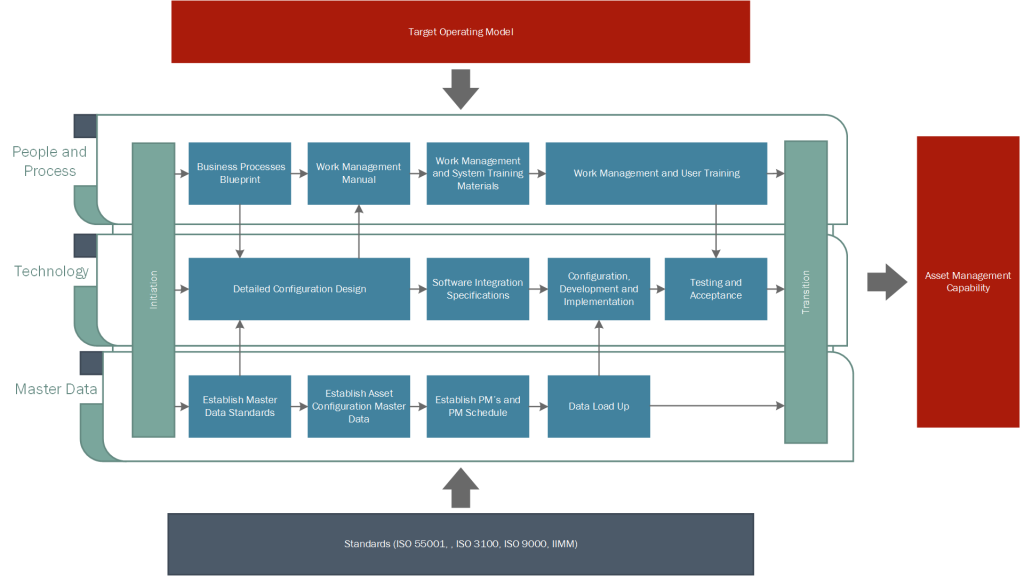

People and Process
Our approach to information systems is that the system is developed to support the requirements of the people and business processes in delivering effective asset management. This stream of work ensures that the information system, and the work management process is developed to support the delivery of asset management. We ensure that your people are trained on an integrated approach on how to perform their asset management functions using the work management process and the information system.
Establish the target operating model
In this stream of work, we will establish an understanding of your current and future state business processes, strategic asset management and work management processes. This will serve as your target operating model.
We have in the past performed a full Asset Management Gap Analysis Assessment which provides an assessment of your current state of asset management approach against asset management standards and provides an improvement road map (your desired state) appropriate for your organisation. Learn More…
Business process blueprint
We will design the blueprint for your business processes, strategic asset management and work management processes that will be supported by the integrated information system solution. The blueprint will consider requirements and leading practice asset management approach as specified in asset management standards (ISO 55001, IIMM, etc). This blueprint will be an integral input in the configuration design of the information. An example asset management framework can be seen in the graphic below.
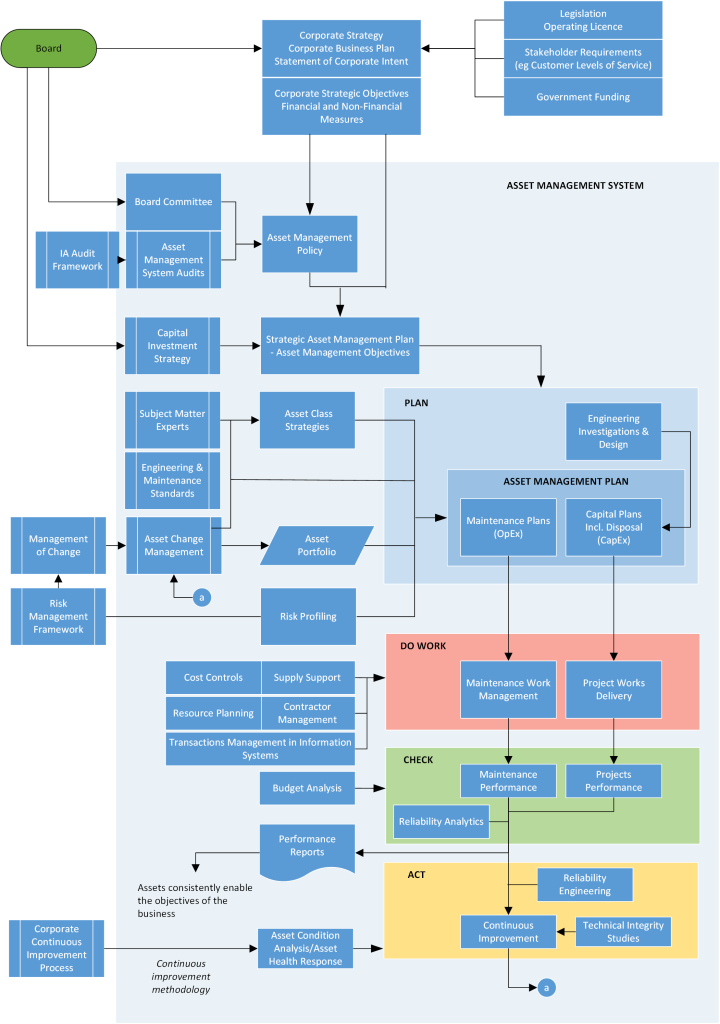
Work management processes manual
We will develop a work management manual which specifies the work management standards and process integrated with your business processes and the asset management information system. The manual will include how you will capture and approve work, plan, schedule, dispatch, execute, close work and continuously improve. An example top-level work management process can be seen in the graphic below.
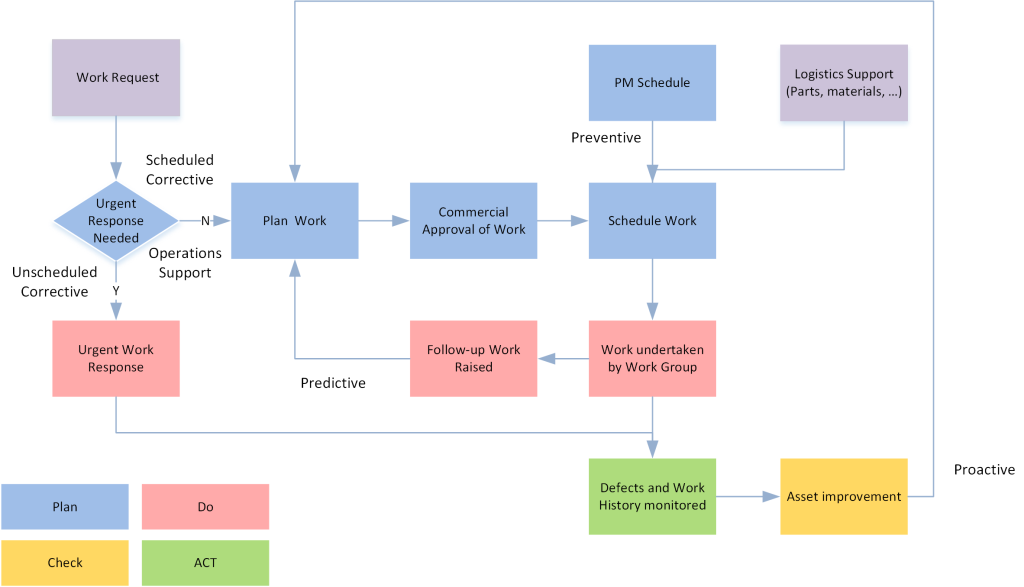
Develop training materials
We will develop the required training materials to best support the transition and change management processes. We develop both physical materials like manuals, reference sheets and one page quick starts as well as full deployment of eLearning system on our web-based eLearning platform.
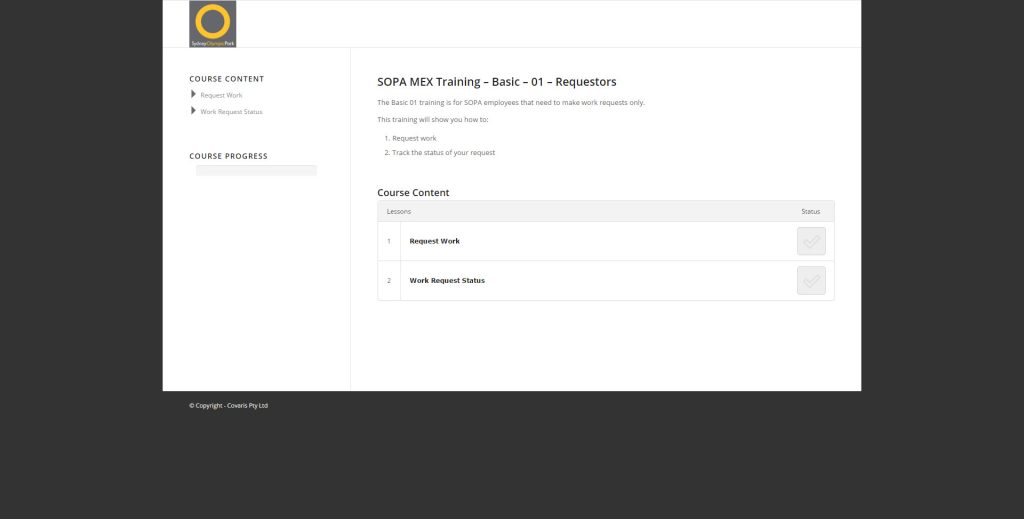
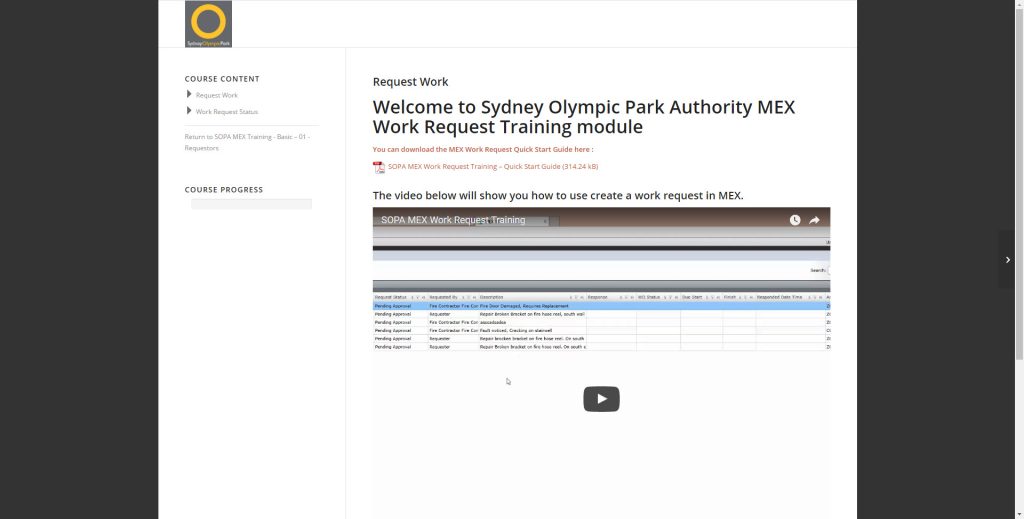

Master Data
Establishing the information system with an accurate maser data set that uses a systematic and standardised approach is crucial to the long term success of the asset management information system. In this stream of work, we first set the master data and configuration standards and then develop and upload the master data into information system.
Develop an asset classification standard
Our experienced engineers will work with your subject matter experts in each unit/branch to develop an appropriate and holistic asset type/classification standard that will standardise the approach to capturing asset data information for asset types/classes. Where applicable, we will use industry standards. For example (but not limited to):
- International Infrastructure Maintenance Manual (IIMM);
- Uniformat 2;
- Kraftwerk-Kennzeichen-System (KKS)
Develop the asset information master data standard
The asset information master data standard is developed to standardise what information will be collected for each asset type. The information collected must be useful to your organisation in enabling asset management functions. The master data asset attribute information will also be aligned in the information system. The basic recommended asset data is:
- Asset Identification Data – Asset ID, Name, Description, etc. A descriptive name familiar to the asset stakeholders. The description requires sufficient detail to enable identification of the applicable asset classification.
- Asset Location: The location allows the spatial position of the asset being evaluated to be specified.
- Valuation Data (where available): used to identify value and actual lives of the assets.
- Asset Condition: used for decision making and analysis of effective life and condition-based remaining life
- Asset Type / Asset Classification
Develop work management configuration master data standard
The work management configuration standard is developed to integrate the work management processes with the information system. The information system codification for work order types, statuses, priority, etc will be aligned with the work management standard.
Establish the asset configuration master data
Working within your organisation and with each business unit/branch Covaris will work to extract and standardise your existing asset data from any current sources as per the developed masted data standards. We also offer services for complete asset register development inducing physical asset validation, and visual condition assessment.
Data load up into information system
We use a proprietary halfway house database system called PMSure to store, standardise, review and validate the asset data, including Preventive Maintenance and PM schedule data prior to implementation into the information system. Once the asset and PM master data is established, reviewed and validated in PMSure, we work with the information system vendor and your IT team to populate bulk data import templates to ensure data integrity in the upload process into the information system.
We can also migrate current in-flight data, Work Requests, Work orders, Work History etc where required. Your current data sources will be mapped and migrated through a systematic approach to ensure data quality.

Technology
The technology stream of work is implemented together with an understanding of the business processes it needs to support and the master data it requires to provide appropriate asset management capability.
Detailed information system configuration design
Working together with you and your software vendor will design a detailed system configuration based on the inputs from:
- The business process blueprint, specifying your business processes, including asset management and work management processes
- The maser data standards which specify the standards for the master data to be established in the information system
Software integration specifications
Working with you and your internal subject matter experts, we will review your integration requirements in order to support your business processes. We will work with you and the information system vendor to design and develop the integration specifications.
System implementation and configuration
Working with your software vendor and your IT we will implement and configure the information system on the chosen platform be it cloud-hosted or on site.
Integrations implementation and configuration
Working with your software vendors, and your IT Team, we will implement and configure the integration solutions.
Master data upload
We will upload the consolidated master data into the information system. This will be an input from the Master Data stream of work.
Testing and acceptance
Working with you and your stakeholders, we will test the solution and provide a controlled and systematic process for acceptance into service by you and and your stakeholders.